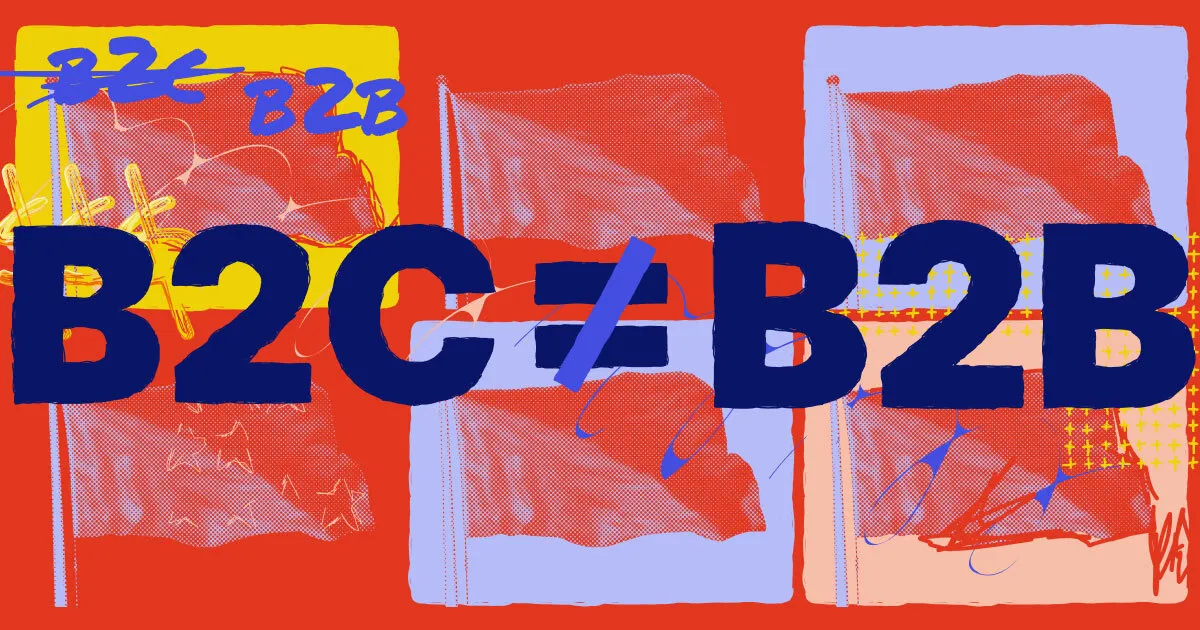A business that operates in the B2B space will often utilize affiliate partner programs as a way to foster growth. It makes sense because the right B2B affiliate can help you scale the volume and quality of incoming leads and sales for your business and manage risk because you’re partnering with an already existing program versus developing it. Affiliate partner programs can offer a significant return on your investment and they provide another revenue stream. But affiliates need to know how to evaluate a potential partner program before joining it, and that includes spotting the red flags.
While there are many B2B affiliate partner programs out there, there are as many red flags to look out for before joining. We spoke to Andrew Kim, the director of network growth at PartnerStack, about what to look out for before joining an affiliate partner program.
One of the first things that businesses should understand is that B2B affiliate marketing has some differences from B2C, says Kim. “Despite the comparison of B2B to B2C sales, there's that emphasis that already exists in the B2C side of things that isn't necessarily reflected in the B2B,” he explains. “I think the core reason for that is because of the ease with which you can do affiliate marketing with products B2C compared to the likes of a B2B enterprise software.” It’s easy to sell a one-off product like a camera or a digital screening subscription compared to a SaaS product.
However, Kim says the gap between B2B and B2C influencers is narrowing and it’s an opportunity for affiliates to get involved because people are looking at peer reviews on SaaS products before they make a purchase decision. While there is opportunity, Kim says to be aware of several major considerations when looking at partnership programs. “You should consider the company, you should consider the product, and you should consider the program itself.” Here are the red flags you should look out for before joining an affiliate partner program:
Affiliate red flag #1: A poor idea of their product or value proposition
If the company with the affiliate partner program doesn’t have a clear idea of how the product fits into the market or what problem their product is trying to solve, then your business will have a hard time driving success. If they can’t explain their product, how can you? Look for programs that can easily and clearly tell you about their product, its relevance to the market, and its intended customers.
Affiliate red flag #2: A complicated sales cycle
In the B2C process, customers click on a link and immediately purchase the item. The B2B cycle is longer.
“When you click on that B2B SaaS link, it might not be that you buy it right away,” says Kim. “You're either submitting a demo request or you're starting a free trial, and then there's a lot more steps involved to actually getting to that final sale.”
Another element businesses should also consider is how the purchase process is configured and if it is easy to go through and understand. The more steps a purchaser has to complete in order to access the product, the harder it is for the affiliate to make the sale. Look for sales cycles that are as straightforward and succinct as possible.
See more: The path to SaaS channel readiness, part 2: Affiliate partners.

Affiliate red flag #3: Inadequate training for affiliate partners
B2B affiliate marketing can take a lot more training than B2C. Kim says a business should look at the training as well as the reporting program. These should include a clear, easy-to-understand learning management system that facilitates affiliates’ needs.
The learning management system should also have accessible success metrics so affiliates can analyze their performances as well as access to collateral that can help them improve and further their growth.
Finally, the training program should have a direct line of communication to the manager of the program so affiliates can access information and raise questions as needed.
Affiliate red flag #4: Lack of ease of payment for affiliate partners
“I think the most important thing more than anything else is ‘Am I going to get paid?’” says Kim. “And is there reliability in the way that I get paid through the platform?”
We’ve all heard the horror stories of trying to get paid from your affiliate partners, which is why this is a classic red flag. Kim says businesses looking at an affiliate partnership program need to do their due diligence on the ease of visibility into their performance, how it’s being tracked, and how rewards are distributed based on performance.
Kim notes that there is an element of trust when it comes to payment in the beginning, but when things aren’t going well, that’s when a business really wants transparency and visibility into the partner program platform. Make sure the terms of payment are clear from the start to avoid confusion down the road.
Related: Top growth channel tactics for summer 2022.

Affiliate red flag #5: An unsuitable affiliate rewards program
Different programs offer different reward options. The quality of the rewards program is something to be cognizant of when evaluating a partnership program. Each business needs to look for a rewards program that is right for their growth needs.
Unlike B2C rewards, which tend to be one-offs upon purchase, B2B programs offer longer periods of time in which a business can earn rewards. Some offer rewards in perpetuity, so every time someone who used your affiliate link renews their SaaS subscription, you earn a percentage of every sale for the perpetuity (or the lifetime) of that subscription. Some companies only offer rewards based on the first year of the subscription. Neither option is wrong, but one might provide a better return on your investment.
Affiliate red flag #6: Lack of product reviews
A lack of product reviews has become another potential red flag as peer reviews have gained traction in the B2B SaaS space. However, an automatic lack of reviews doesn’t necessarily mean avoiding pursuing product affiliation.
“The opportunity here is that there is room for you to go and create those reviews yourself and drive traffic to the product because people want information,” says Kim. The best way to do so is to ensure you have something of value to offer the product owner. This includes a high domain authority and a high traffic website.
From there, you can reach out to the company and offer to review their product. “Now the company has been able to get something of value by being listed on your website,” explains Kim. Think of it as creating your own affiliate partnership program.
Popular affiliate programs get hundreds of applications every day because they’ve discovered and addressed these red flags to create a worthwhile experience for their partners. Found the right program and ready to apply? Your application needs to stand out and show why you would be a top tier partner. Kim says don’t hesitate to talk to your potential affiliate partner. Learn about their program, explore your fit, and you can hopefully spot some green flags, too.

















